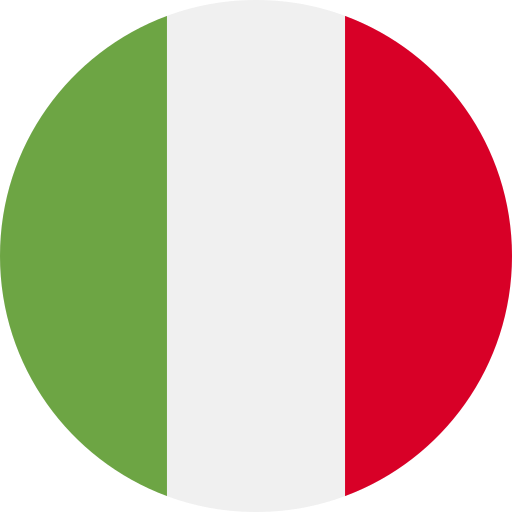Italy’s rich tapestry of dialects reflects its diverse cultural heritage and history. Each region boasts its own unique linguistic flavor, making the “mapa de dialectos italianos” a fascinating exploration for anyone interested in language or culture. From the melodic tones of Neapolitan to the sharp sounds of Sicilian, these dialects offer a glimpse into local traditions and identities.
Overview of the Mapa De Dialectos Italianos
The “mapa de dialectos italianos” visually represents Italy’s linguistic diversity. Each region showcases its distinct dialect, contributing to national identity. For example, Northern Italy features dialects like Lombard and Emilian-Romagnol, characterized by unique intonations and vocabulary. Central Italy includes Romanesco, known for its distinctive phonetic traits.
Southern Italy boasts dialects such as Neapolitan and Sicilian. Neapolitan is melodic and often incorporates Spanish influences, while Sicilian exhibits sharp sounds with a rich historical context influenced by Arab and Greek languages. The map highlights these regional variations, illustrating how geography shapes language.
Understanding this mapa enhances appreciation for local traditions. It reveals cultural nuances embedded in everyday communication across regions. Exploring these dialects fosters connections with Italian heritage while emphasizing the importance of preserving linguistic diversity within a unified nation.
Importance of Italian Dialects
Italian dialects play a crucial role in expressing regional identities and preserving cultural heritage. Understanding these dialects enriches my knowledge of Italy’s history and traditions.
Cultural Significance
Italian dialects reflect the unique customs, folklore, and artistic expressions of their regions. Each dialect serves as a vessel for local stories, songs, and idioms that connect people to their roots. For instance, the Neapolitan dialect carries the vibrant spirit of Naples through its music and poetry. Recognizing this cultural significance fosters respect for Italy’s diverse communities and encourages appreciation for their distinct contributions to national identity.
Linguistic Diversity
The linguistic diversity found in Italian dialects showcases variations in grammar, vocabulary, and pronunciation across regions. Dialects like Lombard or Emilian-Romagnol differ significantly from Standard Italian in both structure and usage. This variation illustrates how geography influences language development. By studying these differences, I gain insights into historical migrations and interactions among various groups within Italy. Such understanding highlights the importance of preserving these languages as integral parts of Italy’s rich tapestry.
Key Features of the Mapa De Dialectos Italianos
The “mapa de dialectos italianos” serves as a vital tool for understanding Italy’s linguistic landscape. It offers insights into regional variations that shape local identities.
Visualization of Dialect Regions
The map visually delineates dialect regions across Italy, showcasing boundaries and overlaps between different linguistic areas. Each region’s dialect appears in distinct colors, making it easy to identify where specific languages or variations are spoken. For instance, the vibrant tones representing Neapolitan highlight its prevalence in Campania, while shades indicating Sicilian reflect its presence in Sicily. This visual representation emphasizes how geography influences language use, allowing observers to appreciate the intricate relationship between culture and communication.
Usage in Linguistic Studies
Linguists utilize the “mapa de dialectos italianos” as a reference point for various studies on language evolution and social dynamics within Italy. Scholars analyze patterns of dialect usage to trace historical migrations and interactions among communities. By examining these dialects, researchers can uncover insights into sociolinguistics—such as how socio-economic factors influence language preservation or transformation over time. The map fosters an understanding of not just words but also cultural narratives tied to each dialect, ensuring that these unique expressions remain recognized within academic discourse.
Examples of Major Italian Dialects
Italian dialects vary significantly across regions. Each dialect showcases unique characteristics that reflect the local culture and history.
Northern Dialects
Northern Italy features several prominent dialects, including Lombard, Emilian-Romagnol, and Venetian.
- Lombard: Spoken in Lombardy, this dialect contains distinct phonetic elements. Variations exist between urban areas like Milan and rural regions.
- Emilian-Romagnol: This dialect encompasses two sub-dialects: Emilian (around Bologna) and Romagnol (in the Romagna region). It highlights historical influences from Latin and nearby languages.
- Venetian: Predominantly found in Venice, Venetian incorporates unique vocabulary influenced by trade interactions with other cultures.
Central Dialects
Central Italian dialects include Romanesco, Tuscan, and Umbrian.
- Romanesco: The dialect of Rome exhibits distinct pronunciation patterns. It uses specific expressions tied to local customs.
- Tuscan: Often considered the basis for standard Italian, Tuscan is characterized by its melodic intonations and rich literary tradition.
- Umbrian: Influenced by both Latin roots and neighboring regions’ languages, Umbrian maintains unique grammatical structures.
Southern Dialects
Southern Italy boasts vibrant dialects such as Neapolitan and Sicilian.
- Neapolitan: Commonly spoken in Naples, Neapolitan reflects a blend of Spanish influences due to historical connections. Its expressive intonation enhances music and poetry within the culture.
- Sicilian: Found throughout Sicily, this dialect shows significant Arabic influence along with Greek elements. The diversity of Sicilian vocabulary represents its rich multicultural heritage.
These major Italian dialects illustrate how geography shapes language use while preserving regional identities across Italy.
Conclusion
Exploring the “mapa de dialectos italianos” opens a window into Italy’s vibrant cultural landscape. Each dialect tells a story that reflects its region’s history and traditions. I find it fascinating how language intertwines with local identity, shaping the way communities express themselves.
The preservation of these dialects is crucial for maintaining Italy’s rich heritage. By valuing linguistic diversity, we not only honor local customs but also foster deeper connections among people across the nation. As I delve further into this intricate tapestry of dialects, I’m reminded of the beauty found in every unique expression and variation throughout Italy.








